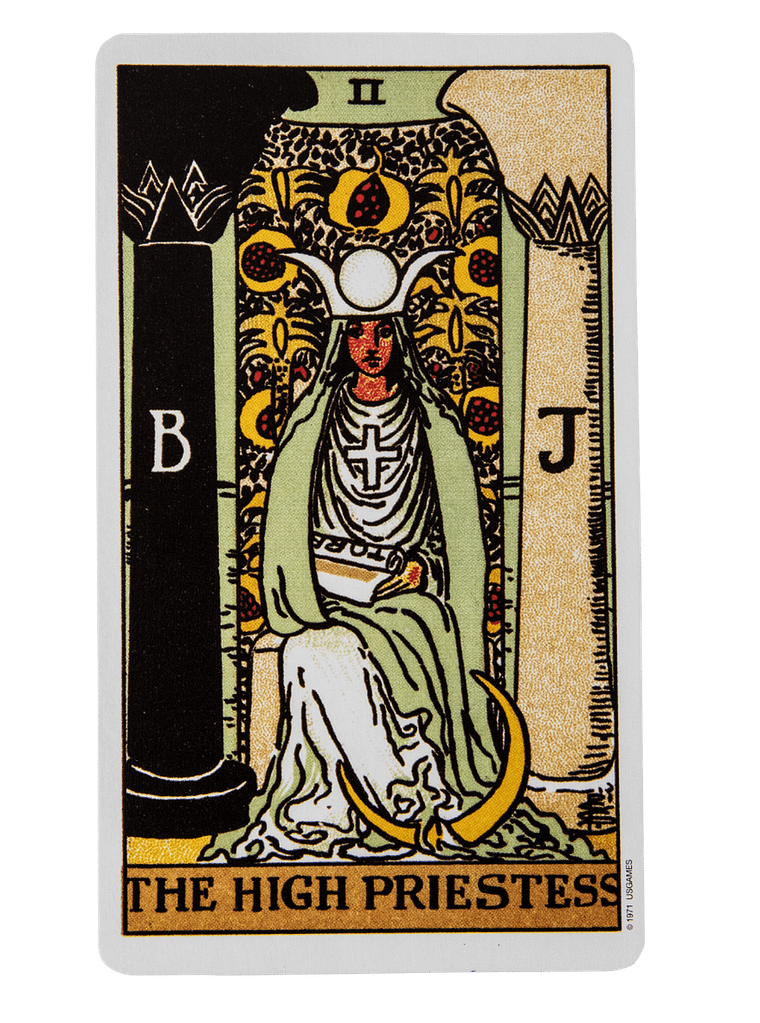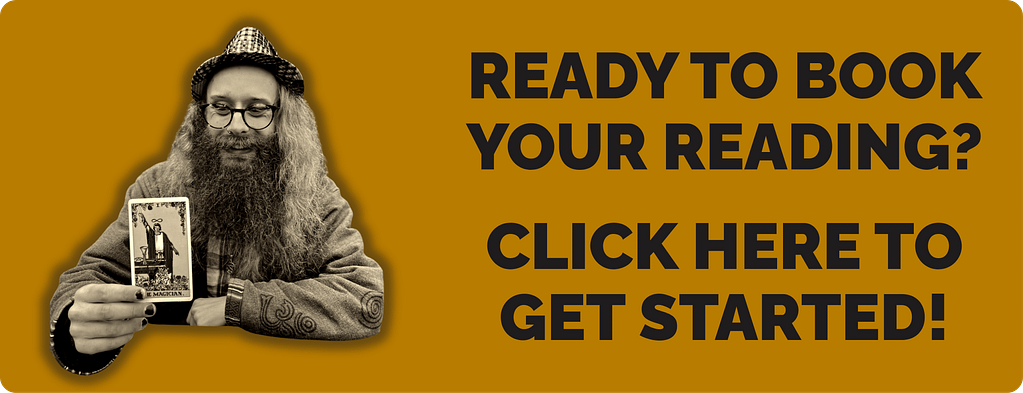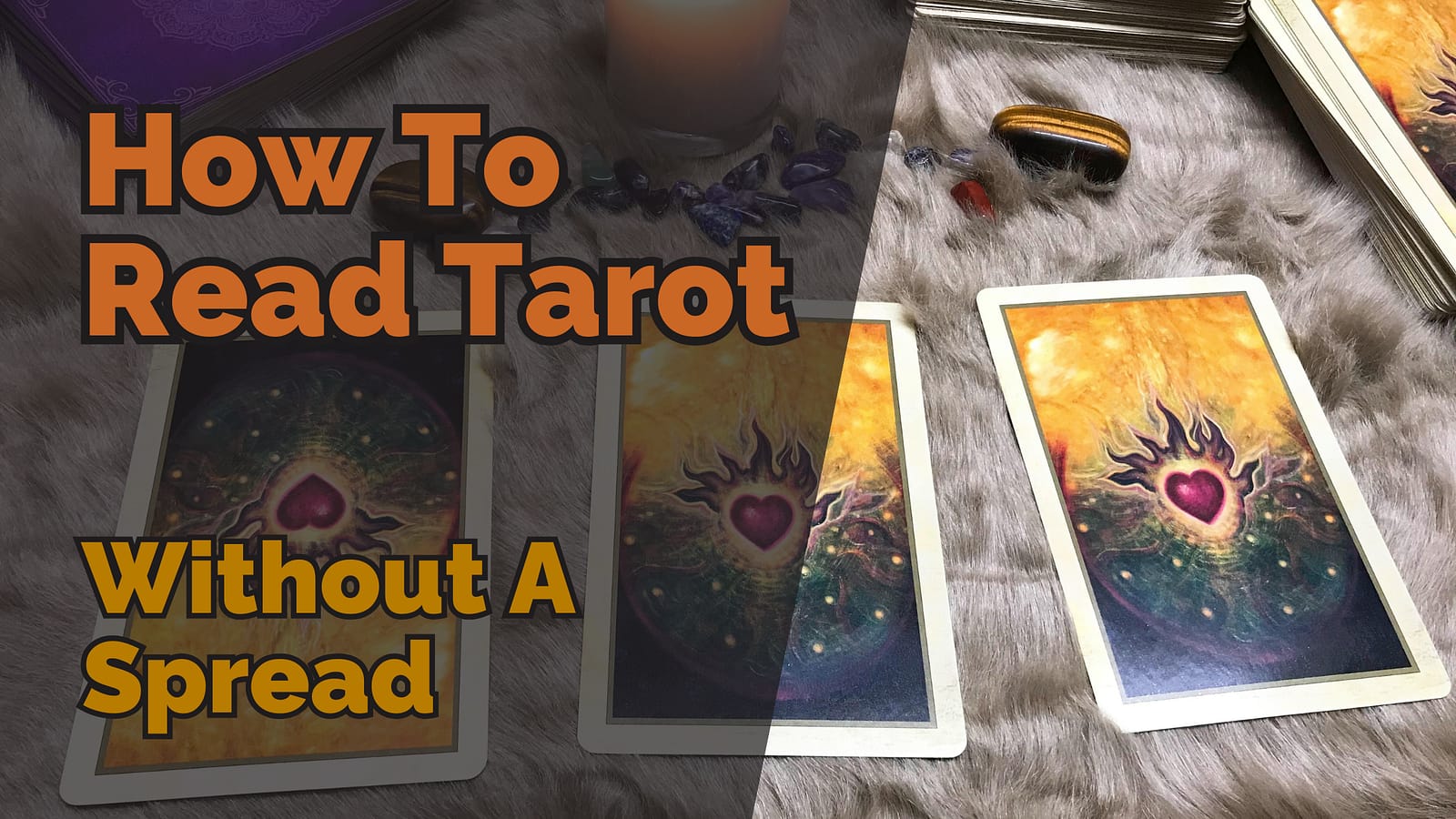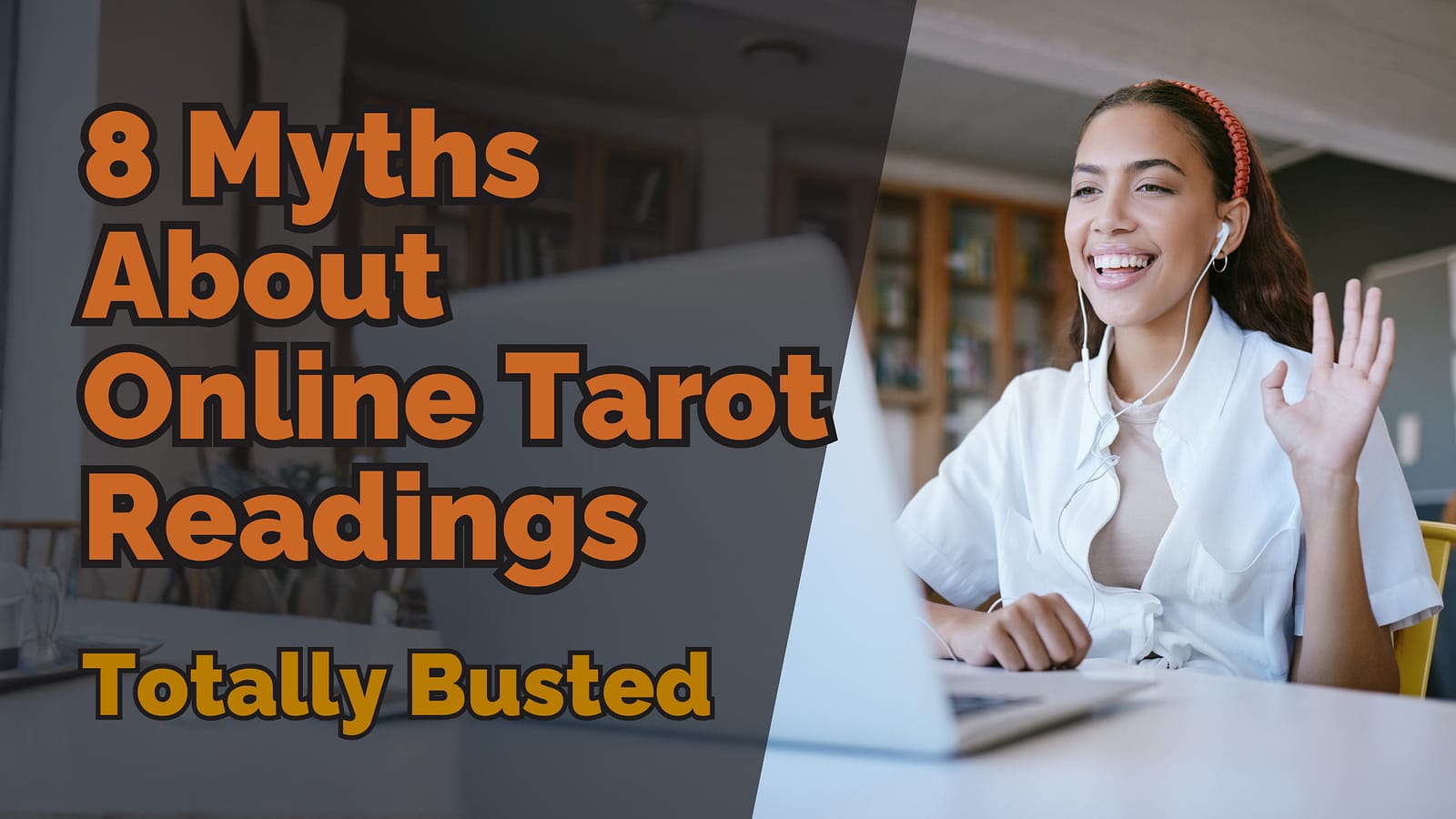
Table of Contents
If you’ve ever had a tarot reading that included the High Priestess card, you might have found yourself wondering, What’s going on with the two pillars? One black with a B. One white with a J. I’ve even had people ask if it means ‘blow job’. Fair question, but no, it’s not that kind of card. They feel important, but what do the B and J on the High Priestess mean? And why are they there?
You’re not alone if you’ve looked at this card and wondered what all the symbolism means. The pillars, the veil, the stillness, it’s rich with mystery and meaning. But none of it’s random. Every part of the High Priestess card points to something deeper, especially the letters B and J.
In this post, we’re going to explore the meaning of those strange letters: Boaz and Jachin. We’ll look at how their roots in sacred architecture hold deeper insight into the High Priestess card. We’ll explore what those pillars represent, how they connect to the Temple of Solomon, and why they matter when this card appears in your reading today. We’ll explore mystery, symbolism, and spiritual presence, not as something hidden behind a curtain but as something already within you.
What Does the B and J Stand for on the High Priestess Card?

On the Rider-Waite-Smith version of the High Priestess card, you’ll notice two pillars flanking the central figure. One is black with a B, Boaz. One is white with a J, Jachin. These are drawn directly from descriptions of the Temple of Solomon in the Hebrew Bible, specifically in 1 Kings 7. There, the temple was built with two massive bronze pillars at its entrance, named Boaz and Jachin.
Boaz and Jachin in Sacred Texts
Boaz means “in him is strength.” Jachin means “he establishes.” These names aren’t just poetic; they reflect the values embedded into the entrance of the ancient temple: strength, stability, and divine intention. Together, they form a sacred threshold. In this way, Boaz and Jachin represent more than just names from an old story. They are invitations into balance, into wholeness, into the mystery that the High Priestess protects and embodies.
Boaz and Jachin in Tarot Symbolism
In the tarot, they symbolise polarity: light and shadow, masculine and feminine, inner and outer, the seen and the unseen. To sit between them, like the High Priestess does, is to hold space for paradox, to accept complexity, and to listen inwardly instead of reaching for certainty.
The High Priestess doesn’t pick a side. She sits between the pillars. She holds the paradox.
What Is the Veil Behind the High Priestess?

Behind the High Priestess in the card is a veil, patterned with pomegranates. This is another direct nod to the Temple of Solomon. In the temple, a thick veil separated the outer area from the inner sanctum, the Holy of Holies. This was the most sacred space in the ancient Jewish religion. It was believed to be the place where the presence of God resided.
The Veil in the Temple
Only one person, the High Priest, was allowed to pass through that veil, and only once a year, on Yom Kippur. They had to undergo purification rituals, and some traditions even say a rope was tied around them in case they died in the presence of the divine.
The Veil in Tarot Imagery
Those pillars don’t just reference ancient architecture; they mark the threshold between surface understanding and deeper wisdom. Boaz and Jachin aren’t just names; they mark the entrance to the sacred. And the veil? It symbolises the boundary between ordinary awareness and divine revelation. It’s the threshold between surface and depth, the outer world and the inner knowing.
What Happened When the Veil of the Temple Was Torn?

In the Gospels, there’s a moment when the veil in the temple is torn. According to Matthew 27:51, at the moment of Jesus’ death, “the curtain of the temple was torn in two, from top to bottom.” The traditional Christian interpretation sees this as the end of the separation between humanity and God. The divine is no longer locked away. Access is now open.
But not everyone reads it that way.
Peter Rollins and the Torn Veil of the Temple
Peter Rollins, in his book The Divine Magician, takes that moment and reframes it as the central act in a cosmic trick. The curtain is torn, and behind it, there is nothing. No Ark of the Covenant. No glowing presence. Just empty space.
Not absence. Not abandonment. But the end of the illusion that God was ever locked away behind fabric, ritual, or gatekeeping. Rollins says the sacred isn’t revealed by tearing down the veil of the temple; it’s revealed to have been everywhere else all along.
In tarot, the High Priestess sits in front of that veil, not as a guard, but as a reminder. She asks if the curtain still needs to be there. She invites you to look past the illusion of separation.
Boaz and Jachin Tarot Symbolism: Thresholds and Duality
The question “What is the B and J on High Priestess?” opens up something much deeper than two letters. It opens a portal into the very idea of sacred space, spiritual initiation, and the courage to move inward.
Living Symbols of Polarity
These pillars aren’t just relics of biblical history. In tarot, Boaz and Jachin are living symbols of opposites. When you sit between them, like the High Priestess does, you’re embracing ambiguity. You’re not choosing between good and bad, light and dark. You’re saying both exist, and both are holy.
This mirrors the inner work we do when we pull the High Priestess card. It asks: Can you trust yourself in the tension? Can you be still without forcing clarity?
Divine Wisdom and the Contrast with the Hierophant
The Hierophant and the High Priestess

The High Priestess often appears in contrast to the Hierophant. The Hierophant represents structure, tradition, external authority, and wisdom passed down through institutions. The High Priestess represents the divine within, intuition, knowing, and spiritual presence that doesn’t rely on hierarchy.
For me personally, this contrast mirrored my own shift. I grew up in a world of sermons and sacraments, where truth came from the pulpit. But the more I deconstructed, the more I began to notice a different kind of voice. It didn’t shout. It didn’t explain. It whispered.
That whisper was the voice of the High Priestess.
You Are the Temple
What It Means for You
So what does it all mean? At its heart, the High Priestess reminds us that there is no gatekeeper. You don’t need permission to approach the sacred. You never did.
The divine isn’t waiting behind a curtain. It’s already within you.
You are Boaz. You are Jachin. You are both strength and stability. You are the one sitting in the stillness, in front of the veil, already worthy to enter.
The High Priestess isn’t hiding anything. She’s waiting for you to realise you’re already home.
Explore the High Priestess deeper on my tarot card meanings page or book a session with me to dive into your own sacred threshold.





